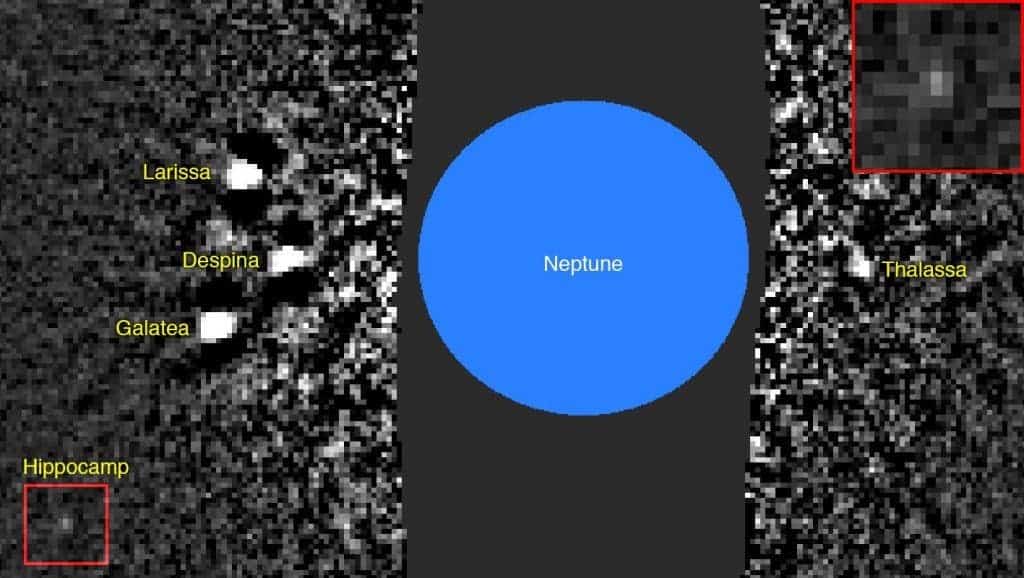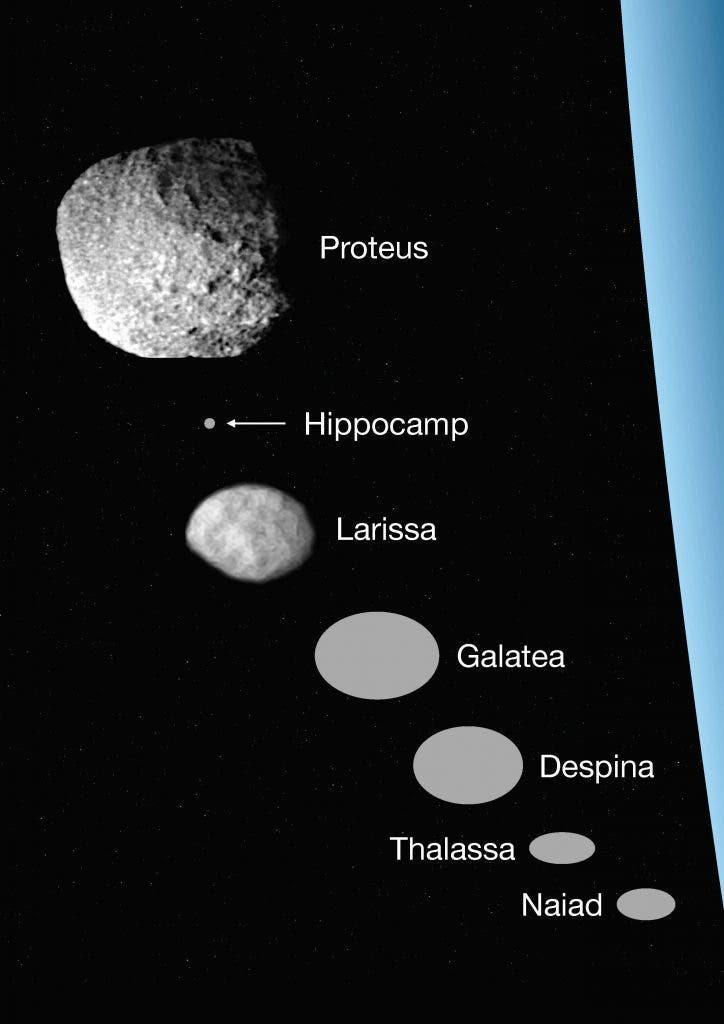No, it’s not a camp for hippos — it’s Neptune’s “new” moon, Hippocamp.

The image in which Hippocamp was discovered. The moon is visible inside the red box; an enlarged version is inset at upper right. Image credits: Mark R. Showalter, SETI Institute.
The planet Neptune was predicted through mathematics before it was actually discovered. The mathematician Urbain Le Verrier used Newtonian calculations to conclude that a planet must exist in Neptune’s place, and his prediction was amazingly confirmed one year later. As the papers of the time wrote, Le Verrier had discovered a planet “with the tip of his pen.” Now, astronomers have used much more than the tip of a pen to discover Neptune’s “new” moon.
Our knowledge of Neptune’s moons was largely provided by the Voyager 2 spacecraft, which spotted six small inner moons orbiting Neptune when it flew by the planet in 1989. All these moons are thought to be younger than Neptune and its largest moon, Triton.
Now, Mark Showalter and colleagues at SETI studied Neptune’s inner moons and rings using the Hubble Space Telescope, and they found yet another Neptunian moon, which they have named Hippocamp, after the mythological Greek sea monster which had the upper body of a horse and the lower body of a fish (yes, that’s also what after a region in our brain is named after).

A size comparison between the seven inner moons of Neptune, along with the planet’s bluish figure at right. Image credits: Mark R. Showalter, SETI Institute.
The reason why this moon has escaped detection for so long is that it’s really, really small. At just 34 kilometers across, it resembles a giant rock more than a proper moon. It orbits close to Proteus, the largest and outermost of Neptune’s inner moons. Showalter and colleagues believe that Hippocamp may have formed from ejected fragments of larger satellites, after a large comet impact.
This is coherent with previous studies, which claimed that Neptune’s inner moons were shaped by numerous comet impacts.
This further adds to Neptune’s already impressive collection of moons. With Hippocamp, Neptune (itself named after the Roman equivalent to Poseidon, the god of the seas and oceans) has 15 known moons, all named for water deities or creatures in Greek Mythology By far, the largest and most interesting of them is Triton, which is also unique because its orbit is retrograde to Neptune’s rotation and inclined relative to the planet’s equator. This suggests that Triton was not formed in orbit around Neptune, but somehow wandered nearby Neptune and was captured by its gravitational field. The next largest moon, Phoebe, only has 0.03% of Triton’s mass.









